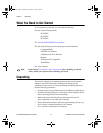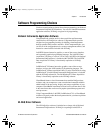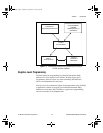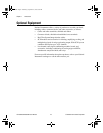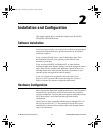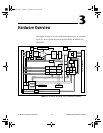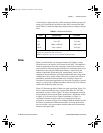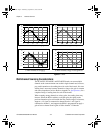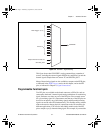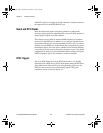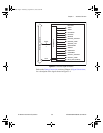
Chapter 3 Hardware Overview
PCI-6023E/6024E/6025E User Manual 3-2
©
National Instruments Corporation
Analog Input
The analog input section of each board is software configurable. The
following sections describe in detail each of the analog input settings.
Input Mode
The boards have three different input modes—nonreferenced single-ended
(NRSE) input, referenced single-ended (RSE) input, and differential
(DIFF) input. The single-ended input configurations provide up to
16 channels. The DIFF input configuration provides up to eight channels.
Input modes are programmed on a per channel basis for multimode
scanning. For example, you can configure the circuitry to scan
12 channels—four differentially-configured channels and eight
single-ended channels. Table 3-1 describes the three input configurations.
For diagrams showing the signal paths of the three configurations, refer to
the Analog Input Signal Overview section in Chapter 4, Signal
Connections.
Input Range
The PCI-6023E, PCI-6024E, and PCI-6025E boards have a bipolar input
range that changes with the programmed gain. Each channel may be
programmed with a unique gain of 0.5, 1.0, 10, or 100 to maximize the
Table 3-1.
Available Input Configurations
Configuration Description
DIFF A channel configured in DIFF mode uses two analog
input lines. One line connects to the positive input of
the board’s programmable gain instrumentation
amplifier (PGIA), and the other connects to the
negative input of the PGIA.
RSE A channel configured in RSE mode uses one analog
input line, which connects to the positive input of the
PGIA. The negative input of the PGIA is internally
tied to analog input ground (AIGND).
NRSE A channel configured in NRSE mode uses one
analog input line, which connects to the positive
input of the PGIA. The negative input of the PGIA
connects to analog input sense (AISENSE).
PCI.book Page 2 Wednesday, September 16, 1998 9:09 AM



